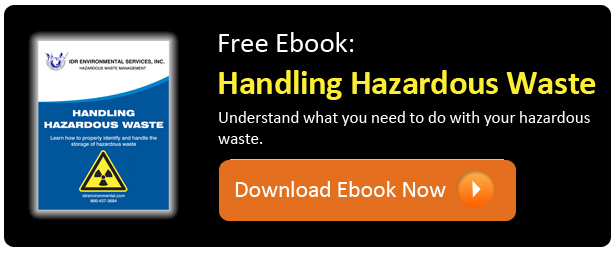The variety of chemicals in surface, ground, and drinking water around the nation has raised a major concern because of the potentially detrimental environmental fallout of these contaminants. Referred to as endocrine disruptors, these waste streams of unused chemicals can have harmful developmental, neurological, reproductive, and immune effects on individual life form, both humans and wildlife, as well as its offspring, or populations.
In order to identify the variety of waste streams and regulate the proper disposal of such pollutants, the Environmental Protection Agency (EPA) has created hazardous waste listings and divided them into four categories: F, P, U, and K.
Each category has specific criteria that describe the listing descriptions. The purpose of the regulation is to insure that generators will have guidance on the proper procedures for safely disposing of these wastes. The P and U listings (40 CFR Part 231.33 ) stand apart from the F listed hazarodus wastes and K listed hazardous wastes because the P and U listings contain pure or commercial grade formulations of certain unused chemicals, which have proven to be dangerous or toxic. Chemical waste streams assigned to a P or U hazardous waste listing must meet the following criteria:
- The waste contains one of the chemicals listed on the P or U listings
- The chemical in the waste must be unused
- The chemical in the waste must be in the form of a commercial chemical product” (CCP) as defined by the EPA.
As you peruse the listings, keep in mind that the chemical composition of the waste does not determine whether a particular listing applies.
Primary Factors for P and U Listing Descriptions
The P and U listed hazardous wastes do not involve waste generated from manufacturing processes. To determine if a particular waste stream applies to the descriptions under the generic P and U listings, the generator must consider two factors:
First—the generator discards one of the listed materials as unused. For instance, many generators discard chemicals because it is “off-specification” and do not serve its intended purpose or they may accidently spill chemicals. Under the EPA guidelines, any chemical that a generator uses for its intended purpose does not qualify as a P or U listing.
Second—to qualify as a P or U hazardous waste listed chemical, the generator discards the chemical in the form of a CCP --its pure form or 100 percent of that particular chemical, or it is the only active ingredient in a chemical composition (almost 100 percent pure), but contains minor impurities.
The EPA provides the following example for factor number two: “a pesticide made for killing insects may contain a poison such as heptachlor as well as various solvent ingredients which act as carriers or lend other desirable properties to the poison. Although all of these chemicals may be capable of killing insects, only the heptachlor serves the primary purpose of the insecticide product. The other chemicals involved are present for other reasons, not because they are poisonous. Therefore, heptachlor is the sole active ingredient in such a formulation even though it may be present in low concentrations.”
The P & U Listed Hazardous Waste applies to four different waste listings:
- Commercial chemical product (CCP) or manufacturing chemical intermediate
- Off-specification CCPs
- Residue, soil, or debris contaminated by P or U listed chemicals
- Container or inner liners removed from a container that held P or U listed chemicals
It is important for generators to remember that some waste streams may be unregulated by the EPA listings, but still must comply with the regulations because it meets one of the four characteristics of hazardous waste:
- Ignitability: solid or liquid waste that can ignite
- Corrosivity: certain acids that can cause the corrosion of metal containers
- Reactivity: waste material that is “unstable under normal conditions”
- Toxicity: waste harmful or toxic when ingested or absorbed
Your hazardous waste can fall into one or multiple categories, and it is critical to your operations to know which category/categories apply to your waste streams so that you can handle them in accordance with federal regulations. In addition, it is critical to remember that a “non-hazardous” designation does not imply unregulated or non-dangerous. As a matter of procedure, you should always consult your hazardous waste disposal company or EPA regulations and your state laws to ensure that you are in compliance and meet the necessary safety requirements.


Comment